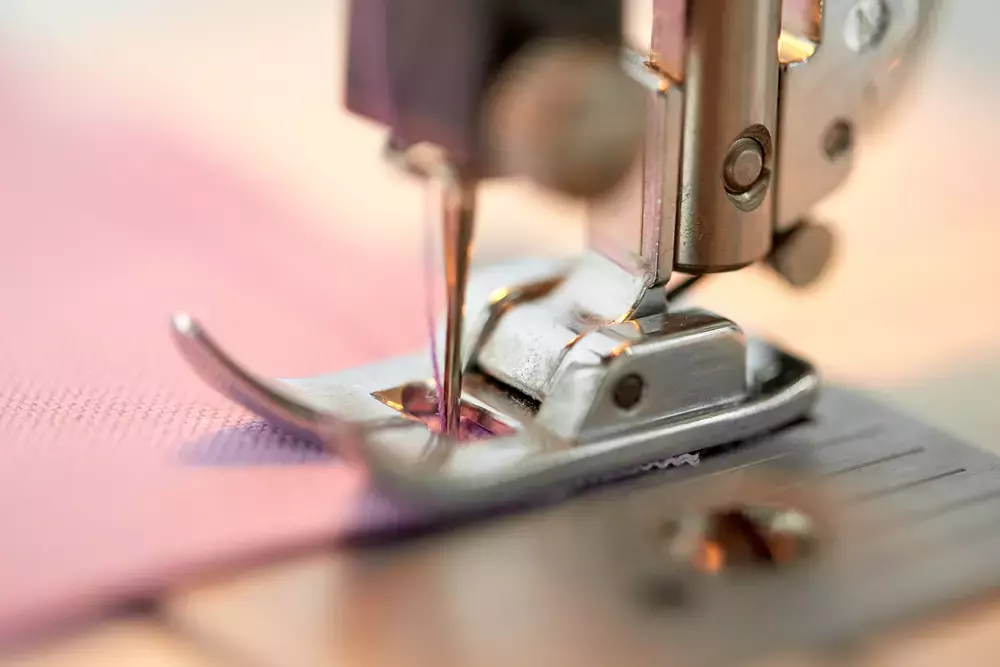How to Choose the Right Stitch for Your Project
2020-11-17
Every stitch matters and ensuring that you choose the right stitch matters too. Without the correct stitch, you might have hems or connections fall apart. If you use the wrong stitch, you might have bunched fabric or fabric that stretched during sewing because of the stitch choice.
Unfortunately, many people just go with their comfort zone and accept the downfalls of using the wrong stitch. If you're looking to turn out professional-looking projects and professional-feeling garments, then you need to start out with the right stitch.
Why the Right Stitch Matters
Getting the best stitching possible can help ensure that everything looks and feels appropriate at the end. These stitches matter on a sewing machine or when hand stitching. You'll want to give careful consideration to all elements of the project.
For example, if you're creating a hem, you might want to ensure that a minimal amount of the thread is visible. A straight stitch or a running stitch would leave a fair amount of visible thread. On the other hand, if you're putting a stitch onto a bag with a professional finish, you might want to use a straight stitch for stability and visibility.
Testing Your Stitch
As much as it is crucial to choose the right stitch, you'll also want to test your stitch. The stitch itself needs to fit with the fabric and the thread choices. Typically, sewers will choose their fabric first, based on their project. Then, they'll find the thread that fits that fabric based on color and material. Finally, you'll evaluate which stitches are right for you.
After you've cut the pieces for your project, you'll have leftover material or scraps. Use this to test your stitches with the thread that you'll use throughout the project.
Straight Stitches
Your straight stitch is your bread and butter, your go-to option, and it fits with most projects as long as you don’t mind seeing the threading. This stitch has a straight line stitching pattern with the top thread and the bottom thread meeting and interlocking at regular spaces.
You can always adjust the stitch length or the tension of the upper thread. A few key issues come up with straight stitches that you can adapt during your test stitches.
Stitches that pucker - When a straight stitch puckers, you can lengthen the stitch. That will usually resolve the issue, but you might have the upper tension too tight for the type of thread.
What’s up with long stitches? The longer the stitch, the less stable the connection. Now, if you opt for the longest possible straight stitch, that is actually a basting stitch, and you'll remove that at the end of your project.
Blind Stitch
Blind stitches are extremely common but not every home sewing machine has the option. This stitch uses a pattern that ensures there is extremely low visibility for the thread. It essentially looks like a straight stitch with a mountain peak every four or five stitches. This provides a stable hold and reliable connections while hiding most of the thread.
There are variations of the blind stitch based on the type of fabric. For example, a cotton fabric would use the straight blind hemstitch. In contrast, a jersey knit with a 4-way stretch would need the stretch blind stitch. The stretch blind stitch gives a little more freedom to the fabric during the straight stitch portion and essentially looks like many tiny mountains fit in between occasional large mountain peaks.
Zigzag Stitch
A zigzag stitch is exactly what it sounds like. The stitching will first zig and then zag, creating an endless 'W' shape. This stitch is ideal for fabrics that might fray. Lengthening or shortening the length will determine how closely the zigzags fall.
The zigzag stitch is standard for stretch fabrics and seams because of its high durability. When using a zigzag stitch on stretch fabrics, then it's best to use a long stitch length, so the fabric does bunch.
This stitch is also used for buttonholes!
Stretch Stitch
It is rare for a sewing machine not to have any stretch stitches, but they aren't normally named "stretch" instead, they have all different types of names. A stretch stitch is any stitch that is made to accommodate stretch fabric. These may not look as consistent or 'straight' as other stitches, but that is because these stitches allow the material to maintain its function and stretch.
A traditional stretch stitch will be perfectly straight but won't be tight or pucker the fabric. This usually calls for a longer stitch length and looser tension. Alternatively, some primary sewing machines have the option to create a very narrow zigzag stitch, which will allow the fabric to continue stretching without distorting the project.
Finally, triple stretch settings allow the fabric to have more stretch but are uncommon on most sewing machines. This stitch is a three-line straight stitch.
Decorative Stitches
If you're using a decorative stitch, you might want to test the stitch a few different times and with a few different stitch lengths. Unfortunately, many people misuse these stitches to give a little flair to, well, everything.
A decorative stitch can workout amazingly if you use a few of these best practices:
● Choose a lighter weight bobbin thread (made of the same materials as the upper fabric)
● Consider using a stabilizing backing.
● Use machine embroidery whenever possible.
When using a decorative stitch, make sure that you're moving at a consistent pace without pulling the fabric in any way. It is challenging to remove, so it's best to take it slow and prioritize consistency.
If you are looking for a new sewing machine, or need a specific needle for your newest stitching project, GoldStar Tool is here to help! Contact our customer service with any questions you may have!





